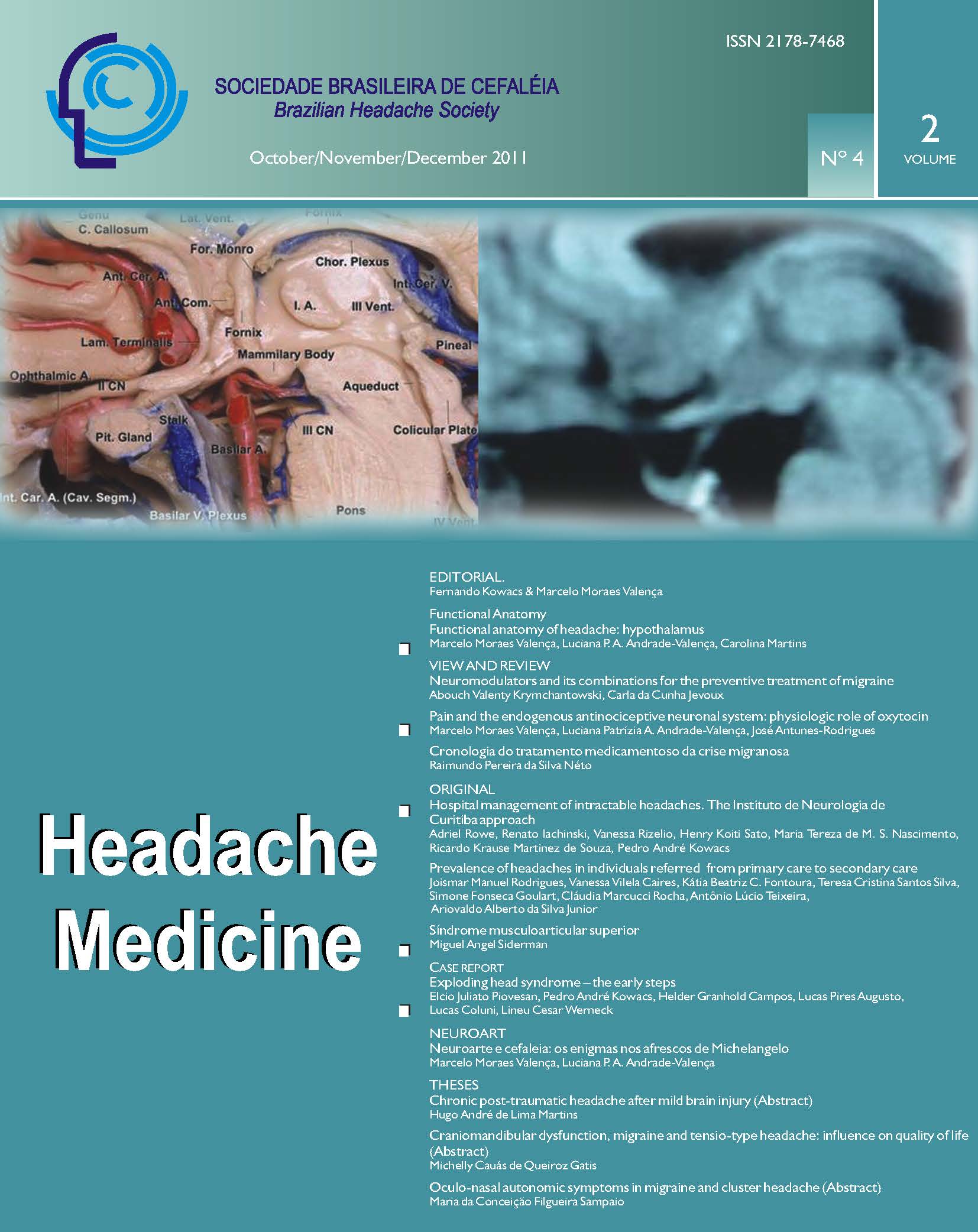Neuromodulators and its combinations for the preventive treatment of migraine
Views: 384DOI:
https://doi.org/10.48208/HeadacheMed.2011.25Keywords:
Neuromodulators, Combination, Migraine, Preventive treatmentAbstract
Migraine is a chronic, debilitating neurological disorder. It affects nearly 15% of the adult population and it is characterized by a range of symptom profiles and degrees of disability. It is a disease generally believed to occur in consequence of a genetically hyper excitable brain state, in addition to a neurotransmitter dysfunction which results in susceptibility to the occurrence of intermittent attacks of headache with particular associated features. Pharmacotherapy remains the mainstay for the prevention of the attacks and despite the use of different classes of drugs, some older than 30 years and used by serendipity, some neuromodulators represent the most modern option and the better studied drugs for the prophylactic treatment of migraine. Supposedly acting by targeting one or more molecular sites in the brain, these drugs alter neurotransmission through effects on ion channels, on specific receptors and on neurotransmitter metabolism. Neuromodulators are considered the state of art in migraine therapeutic and its combination may represent an upcoming option for patients not responding well or presenting limiting tolerability issues with full-dose monotherapy. In this review, we explore the specificities of the different drugs belonging to this pharmacological class, the evidence available for its use in migraine as well as the fundamentals and potential for new approaches combining two neuromodulators, even in lower doses.
Downloads
Published
How to Cite
Issue
Section
License
Copyright (c) 2011 Headache Medicine

This work is licensed under a Creative Commons Attribution 4.0 International License.












